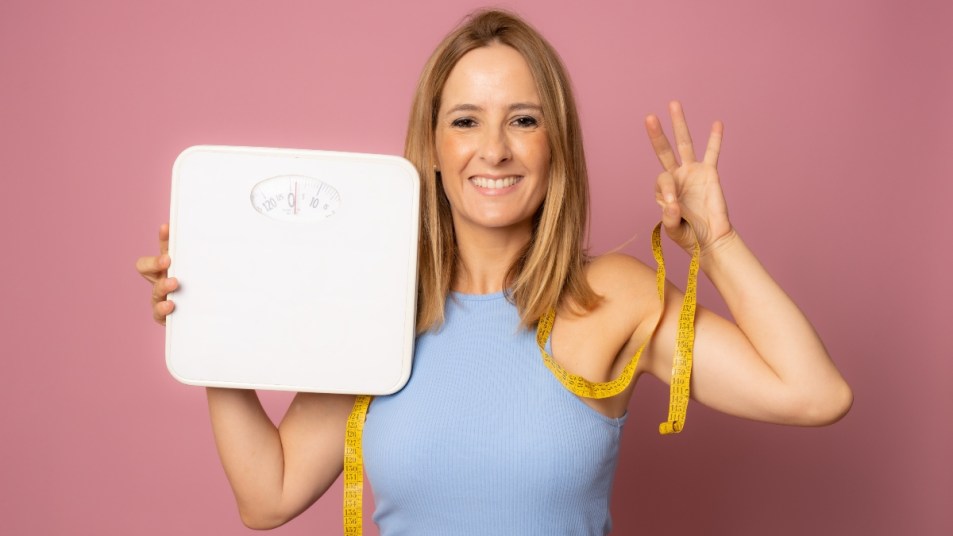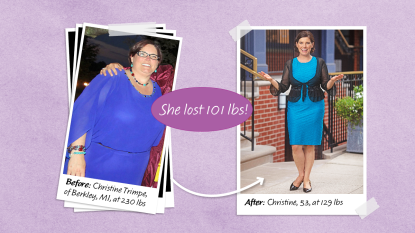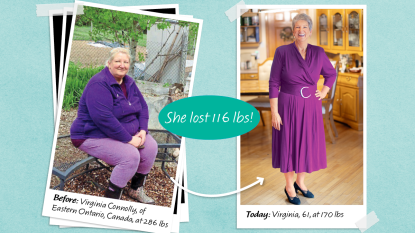Tired of Stubborn Fat? Expert Reveals How To Get the ‘Master Detoxifier’ for Weight Loss
Lose weight by supporting your liver.

Losing weight isn’t easy. With all the fad diets, exercise plans, and health advice out there, it can be overwhelming trying to figure out what works best for you. As it turns out, though, there is already a natural chemical in your body that may help you get rid of stubborn extra weight. We talked to an expert about liver-detoxifying glutathione, and how increasing its levels could be a tool that aids in weight loss. Read on to learn more about glutathione and its potential benefits.
What is glutathione?
The body needs the antioxidant glutathione, known as the “master detoxifier,” to ferry trapped fat and toxins from the liver and out of the body. With enough of this mighty molecule, the body can function optimally, so we feel our best and release those pesky pounds. And while the body makes its own glutathione, it also absorbs it through food and supplements, which is welcome news since levels naturally decrease as we age. “Learning to maximize glutathione in the body is crucial, as many of us are being bombarded by more toxins than our body can fight off,” says Mark Hyman, MD.
How to Harness the Power of Glutathione for Weight Loss
A toxin-laden liver may also be the hidden reason behind why so many diets fail. Luckily, it’s easy to reverse. “More glutathione equals more fat burning,” glutathione expert Nayan Patel, PharmD, reveals. To get the perks, he created a two-week slimming reboot designed to harness the detox power of glutathione. During this time, you’ll support your liver by eating a clean menu of whole-food, plant-based options, plus fish and healthy fats. You’ll avoid foods that strain the liver like alcohol, meat, and dairy.
Want more ways to lose weight in a healthy way? Feeling and looking your best is as easy as following these three steps below.
Weight Loss Tip #1: Let Food Lift You
“Food is the building block for our body’s glutathione-making machinery,” Patel notes. Everyone’s toxic load is different, but Patel recommends enjoying a steady diet of glutathione-rich foods including zucchini, skin-on potatoes, pork, and winter squash. He also advises eating fare rich in the glutathione building block cysteine, like cod, walnuts, and eggs.
Weight Loss Tip #2: Supplement
To get a continuous dose of glutathione, women over 45 can also take a supplement. But many formulations are not absorbed properly. Fortunately, experts say liposomal glutathione is more potent than traditional forms. Why? The molecule is encapsulated inside protective fatty lipids, preventing it from being devoured by digestive enzymes.
Proof of the power of this form: In a 2017 study, folks given 500 milligrams of liposomal glutathione significantly increased their levels in two weeks. The recommended daily dose varies based on toxin exposure, but experts suggest around 500 -1000 milligrams daily. Rest assured, Patel says that glutathione is safe, so you are unlikely to overdo it. Talk to your doctor before starting supplementation to determine your ideal dosage.
One word of caution: Some people experience side effects like bloating, cramping, or breathing problems when starting glutathione supplements. Let your doctor know if you’re experiencing these issues. Health expert Ann Louise Gittleman, PhD, advises further supporting your liver with a cup of dandelion root tea.
Weight Loss Tip #3: Reach for Vitamin C
With all this boosted energy and speedy weight loss, you’ll want to keep eating and supplementing with your liver in mind. But even if you don’t, the good news is that glutathione can recycle itself in the body by grabbing electrons from other antioxidants, such as vitamin C. So once you’ve shored up your levels, consider supplementing with C. “This keeps the glutathione coffers full,” Patel says. Indeed, research published in The American Journal of Clinical Nutrition found that getting 500 milligrams of vitamin C a day stabilized glutathione levels for participants.
This content is not a substitute for professional medical advice or diagnosis. Always consult your physician before pursuing any treatment plan.
A version of this article originally appeared in our print magazine, First for Women.













